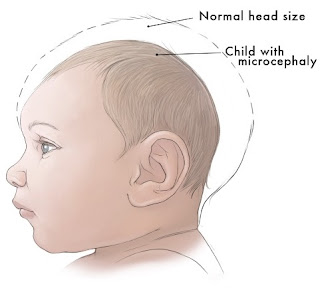Zika- How it affects infants

From my previous posts, it was mentioned that Zika rarely causes death, and hospitalization is also uncommon. So what is the most devastating effect of the Zika virus? It can cause microcephaly in infants. When the virus first began to spread like wildfire in Brazil, Doctors were not very certain of the implications. However, what was observed, was that there was a raising number of microcephaly in infants. Based on further investigation, a link was established between the virus and microcephaly. What is Microcephaly Microcephaly (my-kroh-SEF-uh-lee) is a rare neurological condition in which an infant's head is significantly smaller than the heads of other children of the same age and sex. Sometimes detected at birth, microcephaly usually is the result of the brain developing abnormally in the womb or not growing as it should after birth. Microcephaly can be caused by a variety of genetic and environmental factors. Children with microcephaly often have dev...

